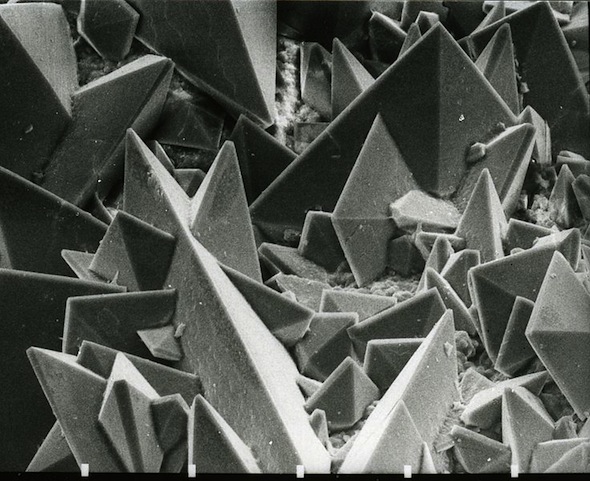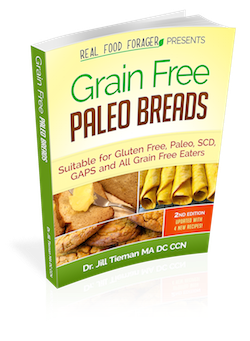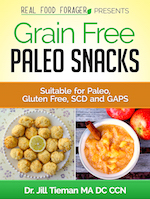Oxalate and oxalic acid are organic acids that come from three primary sources: the diet, from fungus such as Aspergillus, Penicillium and possibly Candida, and they also come from metabolic processes in the body. Oxalates are very powerful oxidants that initiate free radicals. I’ve talked about oxidants and anti-oxidants several times and so you probably know that oxidants are very dangerous highly reactive molecules that cause tissue damage. Oxalates are present all the time and the body usually disposes of them through the stools. It is when there are underlying conditions in the body that things go awry.
4 Reasons to avoid oxalate in the diet
1 — If you are a person who forms stones (you may have a family history of kidney stones or have already passed a stone)
2 — If you or someone you know is on the autism spectrum
3 — If you or someone you know has digestive issues, leaky gut or inflammatory bowel disease
4 — If you or someone you know has fibromyalgia or vulvodynia
The low oxalate diet is another aspect of diet management that can potentially address these problems if other dietary changes have not helped with the above conditions.
Calcium oxalate stones
Some people are susceptible to calcium oxalate kidney stones. If you have ever had a kidney stone or been with someone who is experiencing the passing of a stone you know that it is probably the most painful experience a person can have, inclusive of childbirth. Ironically (or not) men seem more susceptible to kidney stones.
About 80% of kidney stones formed by adults in the U.S. are calcium oxalate stones. Usually a low oxalate diet is recommended to people who have had a calcium oxalate stone. However, it is not clear that restriction of dietary oxalate helps prevent formation of calcium oxalate stones in these individuals. Some researchers say it will help, some researchers suggest it is not the whole picture and rightly so.
Since intake of dietary oxalate accounts for only 10-15% of the oxalate that is found in the urine of individuals who form calcium oxalate stones, many researchers believe that dietary restriction cannot significantly reduce risk of stone formation.
Dangers of oxalate stone formation
Calcium oxalate stones are composed of crystals and can range in size from the diameter of a grain of rice to a two inch diameter mass. Many kidney stones contain calcium, but this does not mean that calcium should be avoided.
When calcium is consumed with high oxalate foods, oxalic acid in the intestine combines with calcium to form insoluble calcium oxalate crystals that are eliminated in the stool. This form of oxalate cannot be absorbed into the body.
However, if calcium is low in the diet, oxalic acid is freely soluble in the liquid portion of the contents of the upper intestine and is easily absorbed from the intestine into the bloodstream. If oxalic acid is very high in the blood being filtered by the kidney, it may combine with calcium to form crystals that may block urine flow and cause severe pain as it passes through.
Importantly, these crystals also form in the bones, joints, blood vessels, lungs, the nerves and brain. In the bone, oxalate crystals may crowd out bone marrow cells, and can lead to anemia and suppressed immunity.
Other conditions involving oxalates
Oxalate crystals can be razor sharp and may cause damage to various tissues. The sharp crystals cause damage due to their physical structure, but any contact with the crystals also increases inflammation.
Iron oxalate crystals cause significant oxidative damage and diminish iron stores needed for red blood cell formation.
Importantly, oxalates also function as chelating agents and may chelate many toxic metals such as mercury and lead. Unlike other chelating agents, oxalates trap heavy metals in the tissues making elimination of them very difficult.
The kidneys are the most common organ to be affected by oxalates. However, there are other tissues, organs and conditions that may be involved. People with fibromyalgia and women with vulvar pain (vulvodynia) can suffer from the effects of excess oxalates.
Autism
Children with autism are also greatly affected by oxalates. There is a body of anecdotal evidence emerging that clearly shows improvement in behavior and learning in children on the spectrum when they are put on a low oxalate diet.
The Autism Oxalate Project was begun in early 2005, started by Autism Researcher Susan Costen Owens, a graduate of Vanderbilt University and the University of Texas at Dallas and long-term member of the Defeat Autism Now! thinktank run by the Autism Research Institute. She began this project after many years of studying how the sulfate, the sulfur and the oxalate chemistries work together in our bodies and after realizing that the gut inflammation in autism characterized first by Dr. Andrew Wakefield and later by many other gastroenterologists may lead to the excess absorption of oxalate from the diet because of increased permeability. Since gastrointestinal conditions are found frequently in autism, it seemed reasonable to see if lowering the dietary supply of oxalates could be beneficial. (Source)
This project draws from three main sources: Scientists around the world who are studying oxalates and who meet at international conferences, from work published in the medical literature and from the first hand observations of parents others using this diet who discuss their progress on the Yahoo! Group list Trying_Low_Oxalates.
Parents know their children best and they are an invaluable source of information about using the Low Oxalate Diet for autism.
How to protect against oxalates
Anti-oxidants are the body’s main response to exposure to oxidants like oxalates. This works well until the oxalate levels get too high or when infection burdens the body’s antioxidant systems. When inflammation in the gut is present, there may eventually be damage caused by the crystals themselves or by the disruption of mineral and heavy metal metabolism.
The best way to find out if you are affected by oxalates is to slowly change your diet to a low oxalate diet. The low oxalate diet is defined as being under 50 mg of oxalates a day.
There are bacteria in the gut that normally are able to transform oxalate to a harmless substance. Unfortunately, these bacteria are killed by antibiotics and/or may not be colonized properly in some children. The main oxalate degrading bacteria, oxalobacter formigenes, does not tend to be present in breastmilk, but scientists think it must be picked up gradually from the environment.
There is research going on to develop this species of bacteria as a medication for people with hyperoxaluria and related conditions. It is currently in clinical trials, but may not be available until 2013.
Foods that are high in oxalates
The following foods are some of the foods that are high in oxalates: spinach, leeks, sweet potato, swiss chard, figs, rhubarb, blueberries, almonds, pecans, cashews, peanuts, beetroot and beet greens, soy products. These are just some of the foods that contain over 50 mg per serving.
One Caveat
Lowering oxalates should be done slowly, over the course of one to two months. If you lower oxalates too rapidly, there can be a detox reaction that can be quite severe. I recommend going to the Trying Low Oxalate Yahoo Group to get the most up to date information on which lists are accurate and how to do this diet. See comments below as well.
Get some oxalate food lists here.
Have you had any experience with the low oxalate diet for a specific condition? Leave a comment and let me know!











